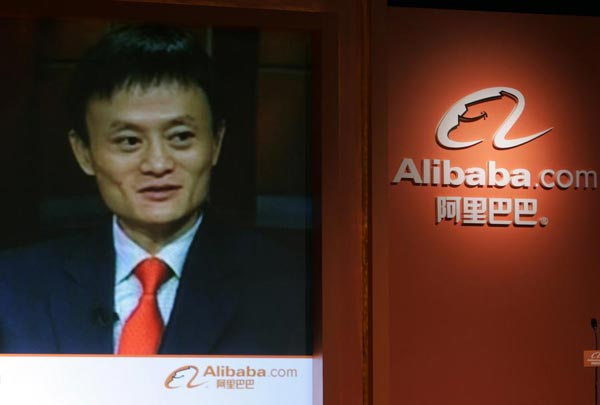Going for broke: the PE world’s big risky bet on China’s internet and mobile industries
The World Cup has begun. Along with being the globe’s most watched event it is also certainly the most gambled upon. Thirty-two teams, sixty-four matches to determine the winner on July 13th in Rio de Janiero. To choose the winner, you want to look at the individuals, the team management, the history of past success, the competition. In other words, it’s a lot like the process a private equity or venture capital firm uses to choose which companies to invest in.
It would be ill-advised, if not borderline crazy, to bet one’s life savings on the USA team to win the World Cup this year. Coral, the big British bookmaker itself owned by three PE firms, is offering odds of four hundred to one.
While no one is offering odds or a betting pool, the current mania among PE firms in China for investing in loss-making internet and mobile services businesses looks like an even wilder bet. Herd behavior is a familiar enough phenomenon across the PE and VC world. But, the situation in China has reached almost comical proportions. At the moment, there is little, if any, PE money going to large, profitable, mature, comparatively “de-risked†manufacturing companies. Instead, almost all the publicly-announced deals are investments in a variety of mainly online shopping sites or mobile-phone travel, game and taxi-booking services, none of which has a true technological barrier to entry, and all of which seem to hinge mainly on the same prayed-for low-probability outcome: a purchase down the road by China’s two internet leviathans, Tencent or Alibaba.
A US IPO is also at least theoretically possible. This year has already seen successful IPOs for Chinese internet and mobile companies, including Zhaopin, Cheetah Mobile, Qihoo 360, Leju, Chukong Technologies, Sina Weibo, Tuniu. But, deals being done now are for smaller, newer less well-established China companies that mainly face a steep failure-filled mountain climb of at least two to three years to even reach a point at which an IPO in New York might even be possible.
It is true that China’s online shopping and services industry is booming. Problem is, almost all the money is being earned by these same two large firms. In online shopping, 80% goes to Alibaba. In online gaming, a far smaller money-maker, Tencent is about as dominant. Both have done a few deals in the last year, buying out or investing alongside PE firms in smaller Chinese companies which have gained some traction. At the same time a few Chinese internet companies have gone public in the US and Hong Kong. But, the overall environment is much less positive. There are far too many “me too†businesses with business models copy-catted from the US pouring out PE and VC cash to buy customers or a thin allotment of a 20 year-old Chinese male’s online gaming budget.
China is the world’s best mass manufacturer with the world’s largest, or second-largest, domestic market in just about every imaginable category. Simply put: there are so many better, less risky, more defended Chinese companies out there than the ones now getting most of the PE and VC time and money.
My bet is that Tencent and Alibaba will also soon lose their appetite for buying smaller Chinese internet players. They are at a similar phase as companies like Amazon, Google, eBay, Cisco, Microsoft, Electronic Arts, IAC/InterActiveCorp, once were. These giants at one time bought small US internet companies by the bucket-load. But, most have either quit or cut back doing so. The businesses usually fail to prosper, are non-core, and prove hard to integrate. Minority deals usually turn out worse. Corporate investors make bad VCs.
In other key respects, there is every difference in the world between the US VC scene and this current activity in China. The US has far more trade buyers for successful VC-backed companies, far more genuine innovation, far more success stories, far less monopolistic internet and mobile industries, and a far richer “early adaptor†market to tap. You don’t need to look back very far to see where this kind of investing activity can lead. It’s only a little more than two years since PE firms poured hundreds of millions of Renminbi into Chinese group shopping sites modeled to some extent on US Groupon. Almost all these companies are now out of business or losing serious money. Chinese like group-buying. They just don’t let any company make any money from offering such a service.
Scan through the last three weekly summaries of new PE and VC deals in China, as digested by Asia Private Equity in Hong Kong. Virtually all involve deals to invest in online and mobile services. (Click here to look at the list of these deals.)
I talk or meet with PE partners on a regular basis. I can recall only a single discussion, over the last six months, where the PE firm’s primary focus was not on these kind of deals. This lonesome PE is the captive fund of one of China’s largest state-owned automobile groups. At this stage, about as differentiated as Chinese PE investment gets is whether the money should go into one of the many online sites for takeaway meals or one of the even larger number selling cosmetics.
China PE is slowly emerging from a prolonged period of inactivity and crisis, the result of both a slowdown in IPO activity and PE portfolios bloated with unexited deals. It’s good to see some sign of animal spirits again, that some PE firms at least are looking to do deals. But at least up to now, it looks like some bad old habits are being repeated: too many PE firms enslaved to the same investment thesis, chasing the same few companies, bidding up their valuations, inadequate diversification by industry or stage.
In the US, in most VC-backed companies, one of the busiest members of senior management is the head of business development. This job is often to find strategic partnerships, barter and co-bundling deals to generate more growth at less expense. This kind of thing is much rarer in China. Instead, for most, the primary method of customer acquisition is to spend a lot of money on Baidu advertising.
Baidu is far more accommodating than Google. It’s the dirty, not-so-well-kept secret of China’s internet industry. Baidu, which handles over 60% of all Chinese search requests, lets advertisers buy placement on the first page of what are called “organic search resultsâ€. There is basically no such thing in China as “most relevant†search results. The only search algorithm is: “who has paid us the mostâ€. It’s one reason Google’s pullback from the China market is so damaging overall for the Chinese internet.
The “pay to play†rules in China’s internet leads to companies taking lots of expensive short cuts, often using PE and VC firm cash. There’s more than a little here to remind me of the Internet Bubble years in the US. I ended up running a VC firm in California right after the bubble burst. I still shake my head at some of the deals this VC firm invested in before I got there, when, as is now in China, pouring lots of LP money in any kind of dot.com or shopping site was seen as prudent fiduciary investing. Things turned out otherwise. They turned out messy. They will too with this PE infatuation with online and mobile anything in China. A bet on the USA to win the World Cup offers more attractive odds and upside.























